Family : Pomacentridae

Text © Giuseppe Mazza

English translation by Mario Beltramini
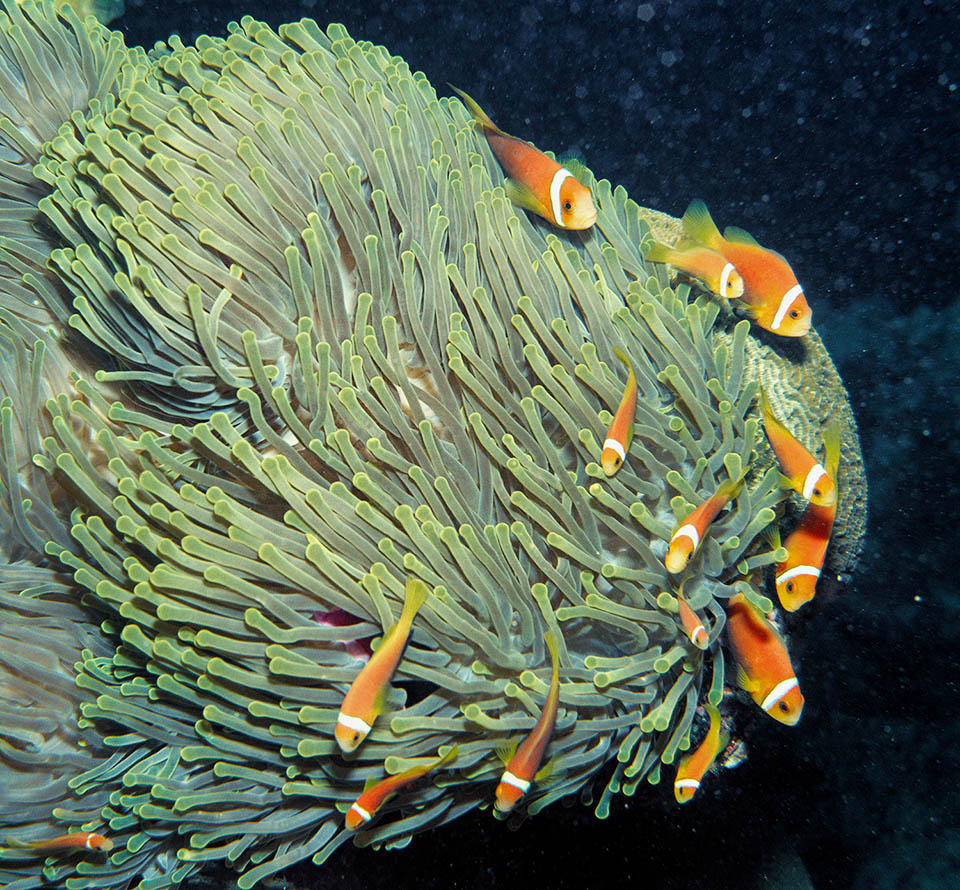
Common in the Maldives, so much that it is called Maldives clownfish, Amphiprion nigripes is present also along the coasts of India and of Sri Lanka © Giuseppe Mazza
The Maldive anemonefish (Amphiprion nigripes Regan, 1908) belongs to the class of Actinopterygii, the ray-finned fishes, to the order of the Perciformes, to the vast family of Pomacentridae, which counts 28 genera and more than 320 species, and to the subfamily of the Amphiprioninae, the so-called clownfishes.
The name of the genus “amphripion” comes from the Greek “amphi” = “on both sides” and “prion” = saw, because on both sides of the head the preoperculum and the suboperculum have an indentation similar to a saw.
The name of the species, “nigripes”, comes from the Latin “niger” = black and “pes” = foot, therefore, a fish with the “black feet” due to the dark ventral fins.
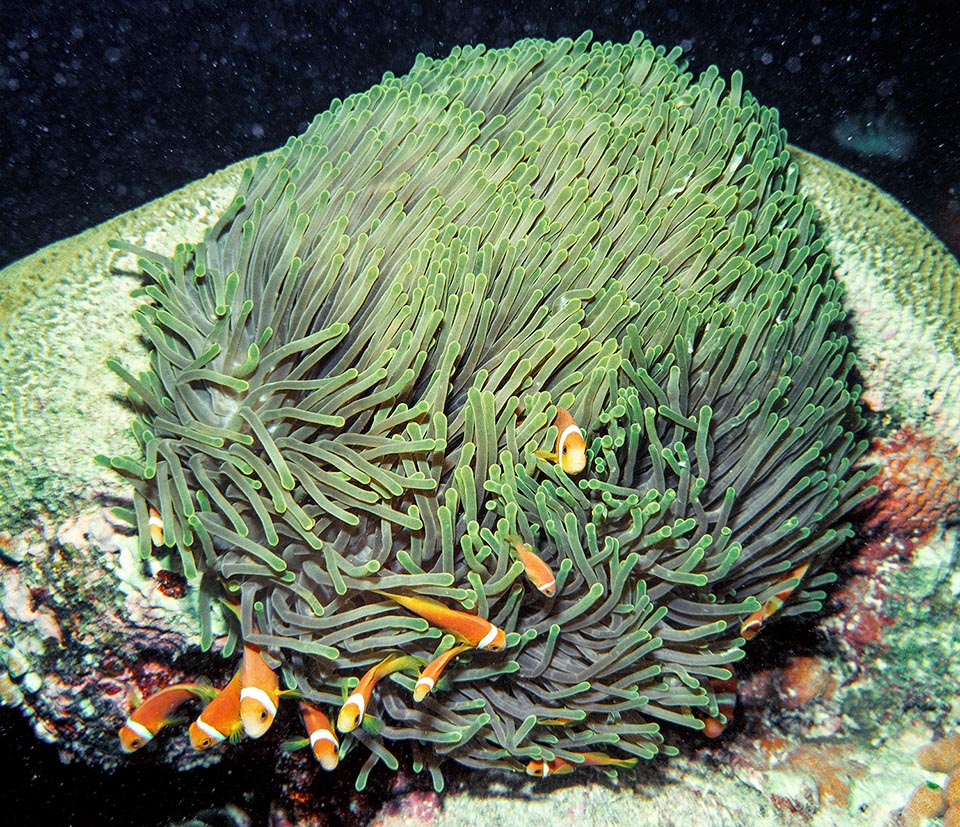
Lives in symbiosis with only one sea anemone: Heteractis magnifica, here seen with several guests immune to the poison of its stinging tentacles © Giuseppe Mazza
Zoogeography
It is present only along the tropical coasts of India, in Sri Lanka and at the Maldives.
Ecology-Habitat
It lives between the 2-25 m of depth, among the protective arms of its anemone, the Heteractis magnifica.
Morpho-physiology
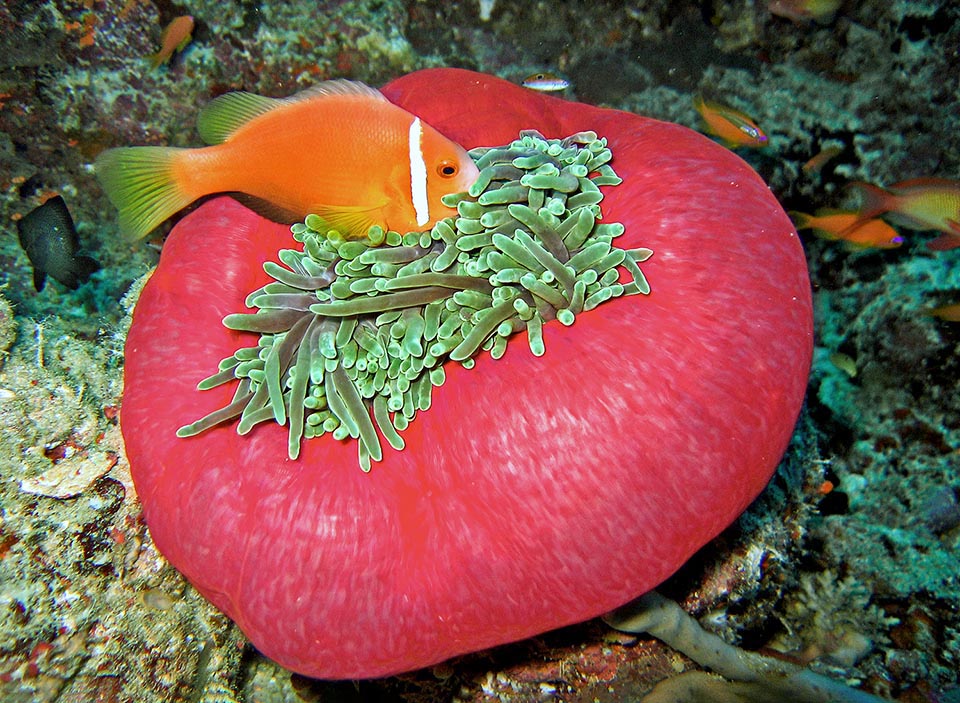
It appears with various colours and reaches even the diameter of 1 m. When a predator is around it closes on itself in a ball, and the Amphiprion nigripes shelter inside © Ettore Balocchi
The Maldive anemonefish does not exceed the 11 cm of length. The body, rather stocky, is oval and compressed on the sides.
There is only one dorsal fin with 10-11 spiny rays and 17-18 unarmed, whilst the anal counts only 2 spiny rays and 13-15 soft. The pectoral fins have 18-19 unarmed rays and the ventral ones, rounded, are black, as the rest, but in some isolated populations, the anal, as underlined the Latin name of “nigripes” and the English one of “Blackfinned anemonefish”.
The caudal is truncated, more or less translucent, yellow-orange like the pectoral fins and generally the rear part of the fish, whilst the rest assumes more charged reddish-brown shades. Typical is a white vertical band, after the eye, at the level of the operculum, which crosses also the back like a saddle.
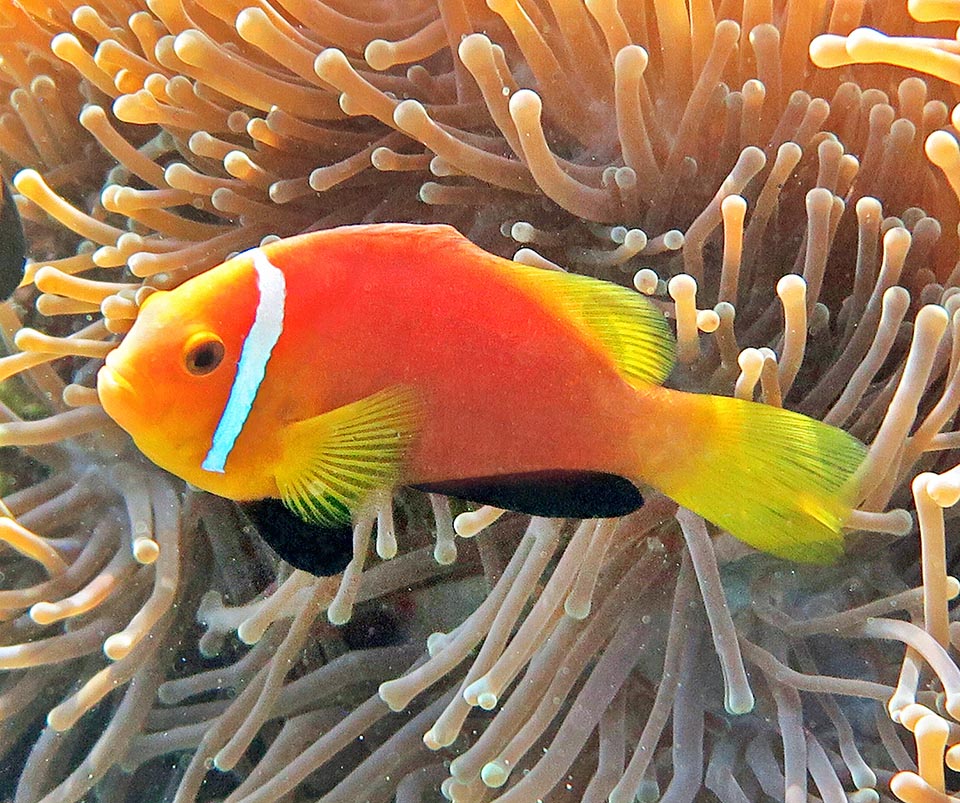
The clownfishes in exchange offer food leftovers. Here we see the black ventral and anal fins typical to the Maldivian, hence the specific “nigripes”, that is black-footed © Gianemilio Rusconi
Ethology-Reproductive Biology
Like all clownfishes, the Amphiprion nigripes lives in symbiosis with an actinia having urticant tentacles. Since small, thanks to the protective mucus covering the scales, the young as soon as gotten out from the larval stage become gradually immune to its poison and adopt it as home, a safe haven where to hide, deterrent for the predators.
In return, they keep clean the actinia from the infesting sea weeds and from the food residues driving away, bravely, some species, such as the butterflyfishes, which have the bad habit of nibbling its tentacles.
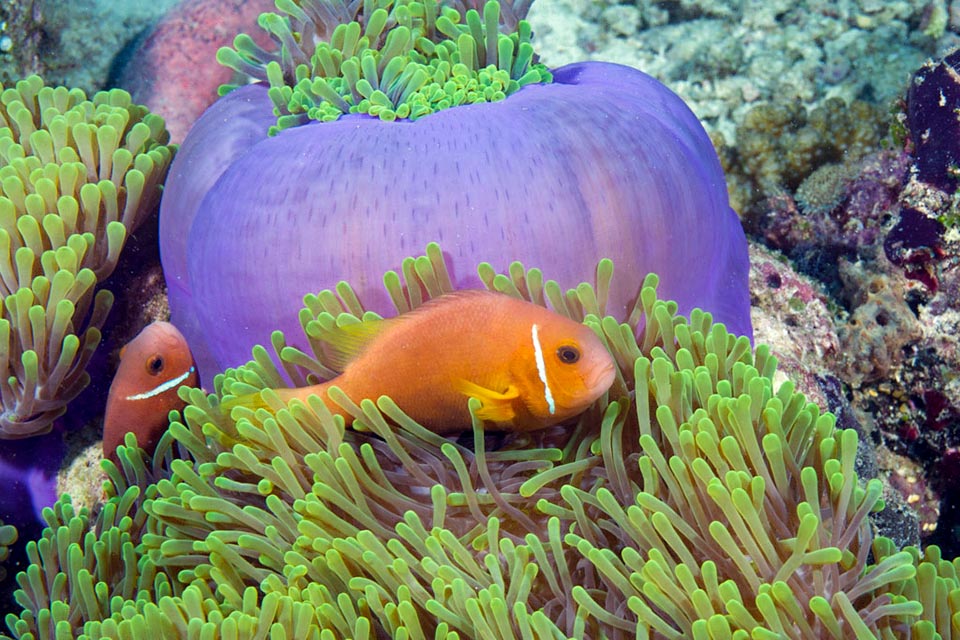
Heteractis magnifica blue in the opening. Growing it may host several Maldive anemonefish. The biggest is an alpha female that besides partner may accept various males © Mark Rosenstein
Most of the butterflyfishes, 21 species on 30, may choose among various hosts, but the Amphiprion nigripes belongs to the nine very faithful butterflyfishes which have gotten married for the eternity with only one species of actinia, in this case, as already mentioned, the Heteractis magnifica.
Generally, these big anthozoans give hospitality to the harem of one dominant female with males of various sizes and upon its death, the biggest one changes sex and takes over.
The Maldive anemonefish nourishes of small algae and zooplankton, mostly crustaceans larvae and eggs carried by the currents.
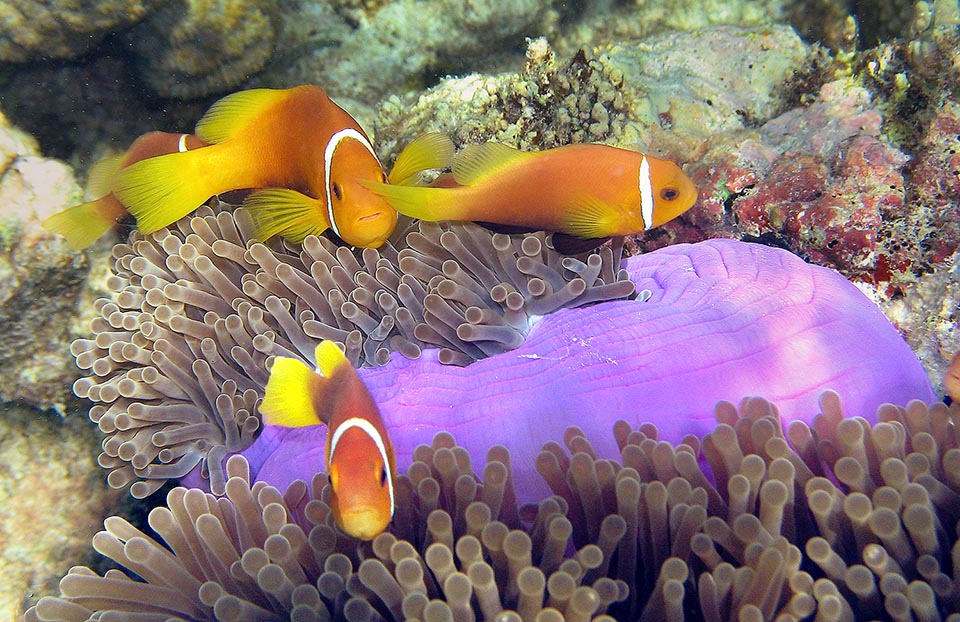
When she dies the biggest one changes sex and replaces her. The Maldive anemonefish could easily live in an aquarium but its anemone is often too voluminous © Gianemilio Rusconi
It is a protandric hermaphrodite species: which means that the males may transform in females once a certain age is reached.
At the moment of the reproduction, the eggs are stuck on the rocks or on the bottom, usually at the feet of the actinia, and after the fecundation the male chosen keeps the watch till the hatching, ventilating them with the fins. Then the larvae disperse and the small will look for a young actinia without fishes or for a welcoming community.
The Maldive anemonefish has reproduced more than once in captivity, but does not stand among the most bred because it accepts only one actinia, moreover bulky. In nature, the populations can double in only 15 months. It is not fished, and it is not sensitive to climate change. The species has a very low fishing vulnerability index: just 10 on a scale of 100.
→ For general information about fishes please click here.
